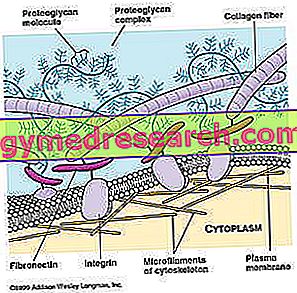By Dr. Giovanni Chetta
General index
Premise
Extra-cellular matrix (MEC)
Introduction
Structural proteins
Specialized proteins
Glucosaminoglycans (GAGs) and proteoglycans (PGs)
The extracellular network
Remodeling of the MEC
MEC and pathologies
Connective tissue
Introduction
Connective band
Fascial mechanoceptors
myofibroblasts
Deep-band biomechanics
Viscoelasticity of the fascia
Posture and tensegrity
Dynamic balance
Function and structure
Tensegrity
Praise to the propeller
The engine of man's specific motion
Static?
"Artificial" life
Breech support
Occlusion and stomatognathic apparatus
Health education
Conclusions
Clinical cases
Clinical case: Migraine
Clinical case: Pubalgia
Clinical case: Scoliosis
Clinical case: Lumbago
Clinical case: Lumbosciatica
Bibliography
Premise
This work represents the natural enlargement and deepening of the previous publications, in particular, "Postura e benessere" (2007) and "The connective system" (2007). As for the others, it is born from the daily clinical practice and from the indispensable theoretical-experiential comparison with other specialists, among which I must cite: Francesco Giovanni Albergati (angiologist), Melchiorre Crescente (dentist), Alfonso Manzotti (orthopedist), Serge Gracovetsky (bio-engineer) and Carlo Braida (physicist). To the latter, who in these days of two years ago I was the primary stimulus to undertake this "enterprise", which unfortunately can not see accomplished except by a desirable parallel dimension, I dedicate all of this to my heart.
Watch the video
X Watch the video on youtubeExtra-cellular matrix (MEC)


A description, albeit of what little we know today, of the MEC ( extracellular matrix ) is essential to better understand the importance of posture in health.
In fact, every cell, like every multicellular living organism, needs to "feel" and interact with its environment in order to be able to perform vital functions and survive. In a multicellular organism the cells must coordinate the different behaviors as in a community of human beings. In multicellular organisms, in fact, the cells use hundreds of extracellular molecules (proteins, peptidiacinoacids, nucleotides, steroids, derived from fatty acids, gases in solution etc.) to continuously send messages, both close and at a distance. In each multicellular organism, each cell is thus exposed to hundreds of different signal molecules present within and outside it, linked to its surface and free or bound in the ECM. The cells come into contact with the extremely complicated external environment through their surface, the plasma membrane, through numerous specialized areas (from a few tens to over 100, 000 for each cell). The various membrane receptors are sensitive to many signals coming both from inside and from the MEC and are subject to profound variations throughout the life of the cell.
Surface receptors are able to recognize and bind a signal molecule (eg peptide hormone, neurotransmitter), thus triggering specific reactions within the cell (eg secretion, cell division, immune reactions). The signal from a surface receptor is transmitted inside the cell through a series of intracellular components capable of producing "controlled cascade" effects, which vary according to cellular specialization. In this way, different cells can respond with different modalities and times to the same signal (for example, exposure to the acetylcholine of the myocardial cell dilutes its contractions, while in the parotid gland it stimulates the secretion of the components of the saliva) - Gennis, 1989.
The cell, therefore, continuously combines, coordinates, controls, activates and ceases numerous and different information coming from its interior and from the extracellular membrane, processing them in the right way and moment to activate the specific reaction (living, dying, dividing, moving, modifying, secrete something in the ECM or store it inside it etc.). The responses that involve a gene change can take several minutes or hours (the genes must be transcribed and then the messenger RNA must be translated into protein), when instead the cell must respond in a few minutes or seconds it uses direct enzymatic activation systems.



